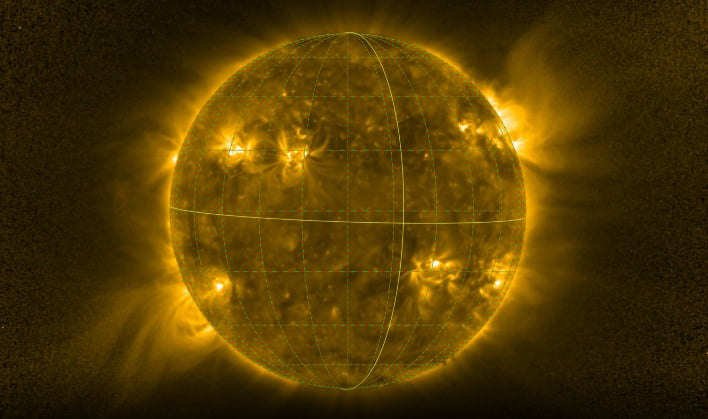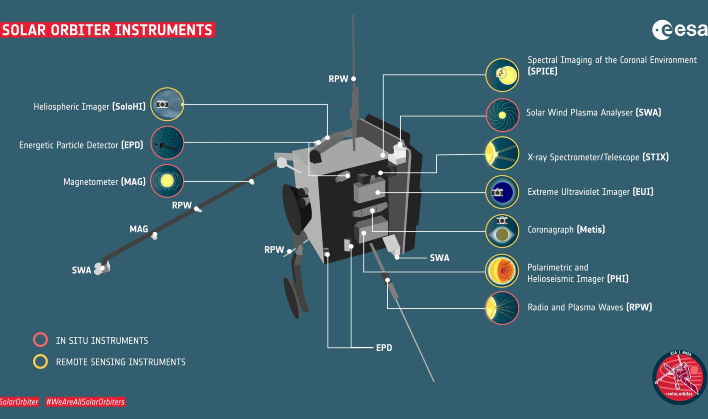Solar Orbiter Nears Mercury To Snap Spectacular Close-Up Shots Of The Sun

On Monday the Solar Orbiter passed directly between the Earth and the Sun, or officially halfway between Earth and the Sun. This put the spacecraft approximately 46.6 million miles from our big yellow friend in the sky, according to the European Space Agency (ESA).
As the orbiter travels ever closer to the Sun, it is taking measurements of the solar winds and volatile corona. The fact that it was located so precisely between the Sun and Earth gave researchers a unique opportunity to study space weather. The steady stream of charged particles from the Sun produces solar wind, that can in turn generate aurorae and can every now and then disrupt electronics on Earth.
While data is being collected from the solar orbiter, it will be combined with other spacecraft operating closer to the Earth, such as Hinode and IRIS spacecraft in Earth's orbit, and SOHO, located nearly 1 million miles (1.5 million km) away from Earth. This will allow researchers to essentially connect the dots of any space weather event at it crosses the 100 million mile (150 million km) between the Earth and the Sun.

"From this point onwards, we are 'entering the unknown' as far as Solar Orbiter's observations of the Sun are concerned," stated Daniel Muller, Solar Orbiter Project Scientist.
The spacecraft will be one-third of the distance of the Sun to the Earth on March 26th. It will stay inside the orbit of Mercury, from March 14th to April 6th. The Solar Orbiter is designed to withstand the intense heat from the Sun for these prolonged periods of time, and will bring high resolution telescopes closer than ever before to the Sun.
"What I'm most looking forward to is finding out whether all these dynamical features we see in the the Extreme Ultraviolet Imager (coined campfires) can make their way into the solar wind or not. There are so many of them!" says Louisa Harra, co-Principal Investigator for EUI based at the Physikalisch-Meteorologisches Observatorium Davos/World Radiation Center (PMOD/WRC), Switzerland.
According to ESA, the March 26th perihelion passage is one of the major events in the Solar Orbiter mission. The orbiter will be utilizing all ten of its instruments simultaneously to gather as much data as possible.
Top Image Courtesy: ESA

